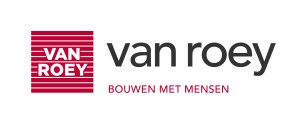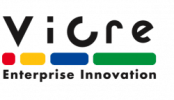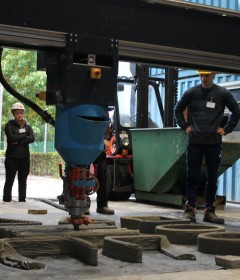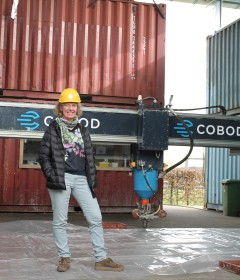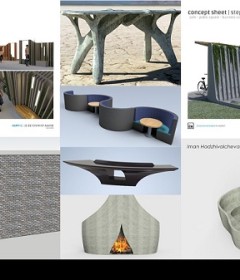Ga naar Nederlanse versie
Frequently asked questions about the 3D-printed house
How long did the printing process take?
We actually printed for 15 days (approx. 8hrs/day) but this was spread over the course of 3 months due to the availability of Thomas More Bouw's students. They were just in a block and exam period and also had lessons. By developing the technique even better, this time can be considerably shortened.
How long did the total construction process take?
The carcass was printed in 15 days (approx. 8hrs/day) but these were spread over 3 months due to the availability of the students. They were just in a block and exam period and also had lessons. The finish was done in a classic way. The total construction time for our house took six months. However, there are still many optimisations to be realized by connecting this type of process better and thinking better in advance.
I want a house like that, where do i begin?
We like your progressive thinking, but unfortunately you're a little early. As a government instance we focused on this technique to highlight this lacune and opportunity for the Flemish construction industry. We want to stimulate them to innovate. This appears to be working:
- Groep Van Roey is the first Belgian contractor to apply the 3D printing technique in a commercial building process.
- During the press conference of 06,07,2020, Alex Van Olmen, CEO of ETIB, announced that ETIB will soon be investing in the purchase of a 3D concrete printer
So, the seeds have been planted, but it is to soon to harves. Our vaccine has passed the clinical test but is not available in the pharmacy yet.
Is there reinforcement in the concrete print?
No, no structural reinforcement has been applied. Only a few crucial places (such as, for example, above window openings), limited reinforcement has been applied by hand. The concrete mix also contains fibres that reduce the plastic shrinkage (they reduce the risk of cracking during the drying phase)
Is there insulation in the walls?
We worked with two different types of walls. In one wall there is a hollow interior space where insulation is blown in. The other wall works with an insulation that is applied on the outside and on which a finishing layer is applied in crepi or vertical solar panels. Everything was designed in such a way to avoid any thermal bridges.
What is the energy level of the house?
This is currently being calculated. We will soon know the result.
How fast can you print
We print at 250mm/s. That's the max we have set for safety reasons, but this could be increased with spme further safety precautions. The entire house was printed layer by layer, one layer has a thickness of about 15mm. The "layer time" is the time it takes for the printer to extrude one layer of concrete over the entire circumference of the house. During our printing process the layer time was about 8 minutes, but this has to be adjusted based on the mortar and the conditions.
Why would 3D printing be useful to the construction industry?
Consider the printer an extra tool or asset. A screwdriver will do the job, but a power drill is often faster, more accurate and more comfortable to work with. Besides that, this "tool" has a lot of added value and potential. To begin with, obviously, there is an enormous freedom of form. The complexity is free, we can printed a curved wall as easily as a straight one. We do not need formwork, dat saves a lot of labour, material and time. We only make the amount of mix we need, so no waste streams. We only print what is structurally necessary, our walls for example have voids which lead to a huge save in materials. Al these material savings decrease the amount and calibre of the transport needed. Freedom of form also allows us to combine different functionalities in the same printed object.
Printing with concrete, that's not ecological!
That's actually not a question, but we would love to reply on that :).
Next to water concrete is the most used material in the world. Evere single one of us would consume about 3m³ of confrete a year (in roads, bridges, sewage, water works, housing, offices, ...), Concrete is indeed easily accessible and has a lot of unique and combineable properties.
We already explained how this technique saves material. If implementing this technique in classic concrete construction would lead even to just a couple of percentages of material saving this will have a huge impact on the enormous total concrete volume being applied on a world scale.
Furthermore there is a big evolution in what's referred to as "green concrete":
- replacing cement with alternative binders
- Recuperating existing concrete. Our current infrastructure and buildings hold tons of concrete that will be releases througout the years to come. Can we reuse this concrete without downcycling it?
- …
Printing with these alternative type of materials would mean another big leap towards a more sustainable construction. There is a lot of research and investigation going on into the printability of ecological materials (such as for example clay). Once they will be available they could be processed in the same manner with this same printer. That's why we hope that our project will help boost the research and development of these materials.
How does the printer work?
In the movie below you can see this very well. Our printer is called a gantry printer. It works basically the same as a small classic plastic 3D printer: the extrusion head is ablo to move in three different directions within the print range of 10 by 10 by 10 metres. The material is transported from the concrete pump trough the extrusion head via hoses.



